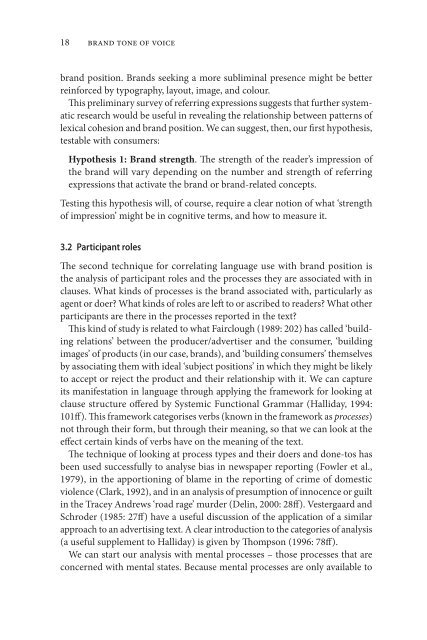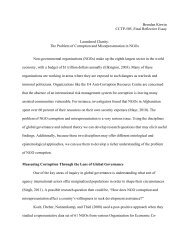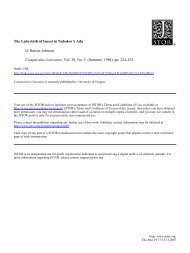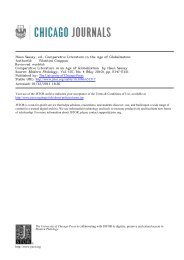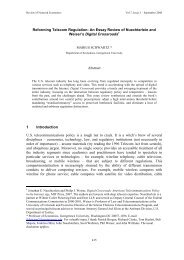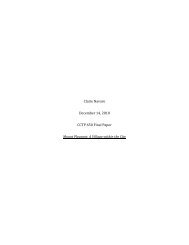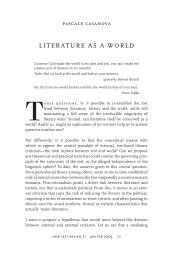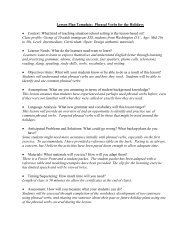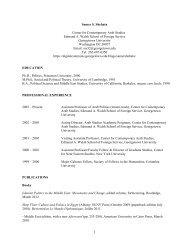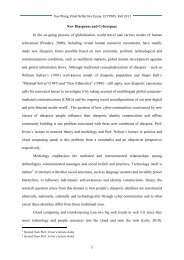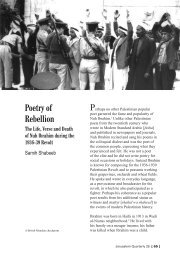Brand Tone of Voice:
Brand Tone of Voice:
Brand Tone of Voice:
- No tags were found...
You also want an ePaper? Increase the reach of your titles
YUMPU automatically turns print PDFs into web optimized ePapers that Google loves.
18 brand tone <strong>of</strong> voicebrand position. <strong>Brand</strong>s seeking a more subliminal presence might be betterreinforced by typography, layout, image, and colour.This preliminary survey <strong>of</strong> referring expressions suggests that further systematicresearch would be useful in revealing the relationship between patterns <strong>of</strong>lexical cohesion and brand position. We can suggest, then, our first hypothesis,testable with consumers:Hypothesis 1: <strong>Brand</strong> strength. The strength <strong>of</strong> the reader’s impression <strong>of</strong>the brand will vary depending on the number and strength <strong>of</strong> referringexpressions that activate the brand or brand-related concepts.Testing this hypothesis will, <strong>of</strong> course, require a clear notion <strong>of</strong> what ‘strength<strong>of</strong> impression’ might be in cognitive terms, and how to measure it.3.2 Participant rolesThe second technique for correlating language use with brand position isthe analysis <strong>of</strong> participant roles and the processes they are associated with inclauses. What kinds <strong>of</strong> processes is the brand associated with, particularly asagent or doer? What kinds <strong>of</strong> roles are left to or ascribed to readers? What otherparticipants are there in the processes reported in the text?This kind <strong>of</strong> study is related to what Fairclough (1989: 202) has called ‘buildingrelations’ between the producer/advertiser and the consumer, ‘buildingimages’ <strong>of</strong> products (in our case, brands), and ‘building consumers’ themselvesby associating them with ideal ‘subject positions’ in which they might be likelyto accept or reject the product and their relationship with it. We can captureits manifestation in language through applying the framework for looking atclause structure <strong>of</strong>fered by Systemic Functional Grammar (Halliday, 1994:101ff). This framework categorises verbs (known in the framework as processes)not through their form, but through their meaning, so that we can look at theeffect certain kinds <strong>of</strong> verbs have on the meaning <strong>of</strong> the text.The technique <strong>of</strong> looking at process types and their doers and done-tos hasbeen used successfully to analyse bias in newspaper reporting (Fowler et al.,1979), in the apportioning <strong>of</strong> blame in the reporting <strong>of</strong> crime <strong>of</strong> domesticviolence (Clark, 1992), and in an analysis <strong>of</strong> presumption <strong>of</strong> innocence or guiltin the Tracey Andrews ‘road rage’ murder (Delin, 2000: 28ff). Vestergaard andSchroder (1985: 27ff) have a useful discussion <strong>of</strong> the application <strong>of</strong> a similarapproach to an advertising text. A clear introduction to the categories <strong>of</strong> analysis(a useful supplement to Halliday) is given by Thompson (1996: 78ff).We can start our analysis with mental processes – those processes that areconcerned with mental states. Because mental processes are only available to


